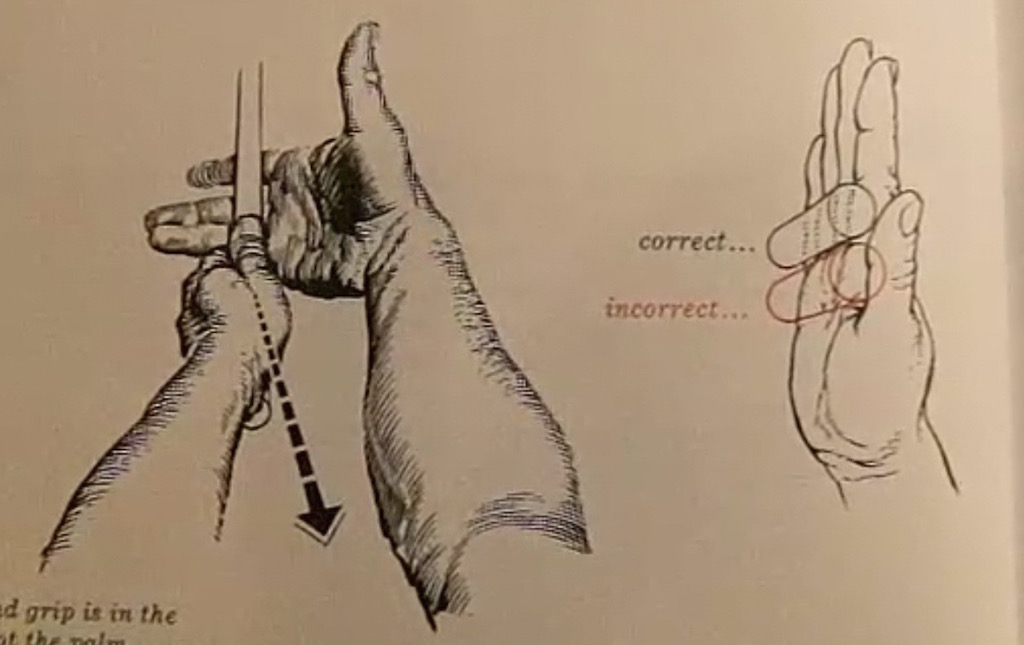Instruction
The Wedge Guy: Engage your core for better wedge play

One of the things that drives me crazy is to watch golfers struggle around the greens, as hitting a golf ball less than 20-30 yards in the air should be super-easy compared to mastering the driver or approach shots. I play with a regular group of guys that are a lot of fun, but most are higher handicap players, and I see some horrifically messed up shots around the greens from these guys.
Almost every mid- to high-handicap player (and some low-handicap ones) I encounter has a short game technique that is overly dependent on hand action, and their body rotation on these short shots is often practically non-existent. These golfers typically flip the clubhead at the ball with the hands in an attempt to make contact and help the ball into the air. This reliance on our hands is aggravated by one or two shots that are hit poorly, thereby making us more “impact conscious”. And the vicious cycle begins – bad shot, more hands-y, another bad shot, tighter grip, another bad shot, quicker tempo — and holes just thrown away.
There is a super-simple drill that any golfer can use to better engage your body core and feel it working.
Pick up a wedge and take your normal grip. Now hold it directly in front of you, with your upper arms relaxed at your side, and your hands about a foot in front of your chest. The club should be vertical, so that you are looking right at the back of your right thumbnail (for right handers). Now, keep your eyes focused on your right thumbnail, and rotate your upper body to move your hands and the club back and forth, starting about a foot in either direction. You want to feel like nothing is moving but your body core. As you continue to rotate back and through, lengthen the range of motion until you are making a full shoulder turn. But always make sure that your hands are right in front of your sternum throughout the range of motion.
Now, extend your arms straight out in front of you, so that the club is pointing away from you at about 45 degrees. Repeat the drill, moving your arms and club back and through only by rotating your body core. Focus your eyes on the right thumb so that you are very aware if you start swinging the arms without rotating the body. That’s what a pitching swing should feel like – one-piece rotation of the body, with the arms and hands “quiet”.
The last piece of the puzzle is to gradually lower the club as you rotate back and through – do this by bending at the hips, flexing the knees, and lowering the hands. Lower the club a little bit on each rotation, so that you continue to feel like the body core is driving the entire action. Once you get so that the club is brushing the turf or carpet as you go back and through, you will be feeling what a solid, functional and repeatable wedge swing should feel like.
I realize this is abbreviated but try it and I think you will see just how inactive your body might have been on your pitch shots.
A great drill to use when practicing hitting these chip and pitch shots is to grip the club with an alignment stick next to the grip, so that the stick extends far enough above the grip to make contact with your lead side. Now, just make those little pitch and chip shot swings. The alignment stick can drift away from your side a bit on the backswing, but that stick will force you to rotate your body core through the impact zone, or it will hit you in the side.
If you work on this body-core engagement, your short game will make dramatic strides to the positive.
- LIKE51
- LEGIT4
- WOW3
- LOL2
- IDHT3
- FLOP1
- OB1
- SHANK3
Instruction
Clement: Weak grips are injuries in the making for many golfers

Like Jordan Spieth, trying to go to a bowed wrist at the top or in the downswing to square the club is placing you in a dangerous position for your lead wrist; you are one tree root or deep rough situation away from a nasty injury that could easily require surgery. Don’t let this be you.
- LIKE0
- LEGIT0
- WOW0
- LOL0
- IDHT0
- FLOP2
- OB0
- SHANK3
Instruction
Clement: Laid-off or perfect fade? Across-the-line or perfect draw?

Some call the image on the left laid off, but if you are hitting a fade, this could be a perfect backswing for it! Same for across the line for a draw! Stop racking your brain with perceived mistakes and simply match backswing to shot shape!
- LIKE1
- LEGIT0
- WOW0
- LOL0
- IDHT0
- FLOP0
- OB0
- SHANK1
Instruction
The Wedge Guy: The easiest-to-learn golf basic

My golf learning began with this simple fact – if you don’t have a fundamentally sound hold on the golf club, it is practically impossible for your body to execute a fundamentally sound golf swing. I’m still a big believer that the golf swing is much easier to execute if you begin with the proper hold on the club.
As you might imagine, I come into contact with hundreds of golfers of all skill levels. And it is very rare to see a good player with a bad hold on the golf club. There are some exceptions, for sure, but they are very few and very far between, and they typically have beat so many balls with their poor grip that they’ve found a way to work around it.
The reality of biophysics is that the body moves only in certain ways – and the particulars of the way you hold the golf club can totally prevent a sound swing motion that allows the club to release properly through the impact zone. The wonderful thing is that anyone can learn how to put a fundamentally sound hold on the golf club, and you can practice it anywhere your hands are not otherwise engaged, like watching TV or just sitting and relaxing.
Whether you prefer an overlap, interlock or full-finger (not baseball!) grip on the club, the same fundamentals apply. Here are the major grip faults I see most often, in the order of the frequency:
Mis-aligned hands
By this I mean that the palms of the two hands are not parallel to each other. Too many golfers have a weak left hand and strong right, or vice versa. The easiest way to learn how to hold the club with your palms aligned properly is to grip a plain wooden ruler or yardstick. It forces the hands to align properly and shows you how that feels. If you grip and re-grip a yardstick several times, then grip a club, you’ll see that the learning curve is almost immediate.
The position of the grip in the upper/left hand
I also observe many golfers who have the butt of the grip too far into the heel pad of the upper hand (the left hand for right-handed players). It’s amazing how much easier it is to release the club through the ball if even 1/4-1/2″ of the butt is beyond the left heel pad. Try this yourself to see what I mean. Swing the club freely with just your left hand and notice the difference in its release from when you hold it at the end of the grip, versus gripping down even a half inch.
To help you really understand how this works, go to the range and hit shots with your five-iron gripped down a full inch to make the club the same length as your seven-iron. You will probably see an amazing shot shape difference, and likely not see as much distance loss as you would expect.
Too much lower (right) hand on the club
It seems like almost all golfers of 8-10 handicap or higher have the club too far into the palm of the lower hand, because that feels “good” if you are trying to control the path of the clubhead to the ball. But the golf swing is not an effort to hit at the ball – it is a swing of the club. The proper hold on the club has the grip underneath the pad at the base of the fingers. This will likely feel “weak” to you — like you cannot control the club like that. EXACTLY. You should not be trying to control the club with your lower/master hand.
Gripping too tightly
Nearly all golfers hold the club too tightly, which tenses up the forearms and prevents a proper release of the club through impact. In order for the club to move back and through properly, you must feel that the club is controlled by the last three fingers of the upper hand, and the middle two fingers of the lower hand. If you engage your thumbs and forefingers in “holding” the club, the result will almost always be a grip that is too tight. Try this for yourself. Hold the club in your upper hand only, and squeeze firmly with just the last three fingers, with the forefinger and thumb off the club entirely. You have good control, but your forearms are not tense. Then begin to squeeze down with your thumb and forefinger and observe the tensing of the entire forearm. This is the way we are made, so the key to preventing tenseness in the arms is to hold the club very lightly with the “pinchers” — the thumbs and forefingers.
So, those are what I believe are the four fundamentals of a good grip. Anyone can learn them in their home or office very quickly. There is no easier way to improve your ball striking consistency and add distance than giving more attention to the way you hold the golf club.
More from the Wedge Guy
- The Wedge Guy: Golf mastery begins with your wedge game
- The Wedge Guy: Why golf is 20 times harder than brain surgery
- The Wedge Guy: Musings on the golf ball rollback
- LIKE91
- LEGIT16
- WOW6
- LOL1
- IDHT0
- FLOP4
- OB1
- SHANK9
-

 News3 weeks ago
News3 weeks agoExperts on understanding ground force and how shoes can impact your golf game
-

 Product Reviews3 days ago
Product Reviews3 days agoThree Swing Challenge: Testing the Edel Array F-2 putter
-

 19th Hole2 weeks ago
19th Hole2 weeks ago‘You’re right, we’re always wrong!’ – Sergio Garcia receives warning during Open qualifier
-

 Equipment4 days ago
Equipment4 days agoWhat clubs do equipment free agents choose to use on tour? We found out
-

 News1 week ago
News1 week agoHighlights from the Wilson Golf Product Testing and Fitting Experience at Pinehurst
-

 News1 week ago
News1 week agoDavis Thompson’s winning WITB: 2024 John Deere Classic
-

 19th Hole5 days ago
19th Hole5 days agoMajor champ ‘disappointed’ not to be chosen as U.S. Ryder Cup captain
-

 Equipment2 weeks ago
Equipment2 weeks agoQ&A: The truth behind Bryson DeChambeau’s new Avoda irons from company founder Thomas Bailey




















Pingback: The Wedge Guy explains why you're not a "right-handed golfer" or a "left-handed golfer" - Fly Pin High
Pingback: The Wedge Guy: Why you aren’t a “right-handed” or “left-handed” golfer – GolfWRX